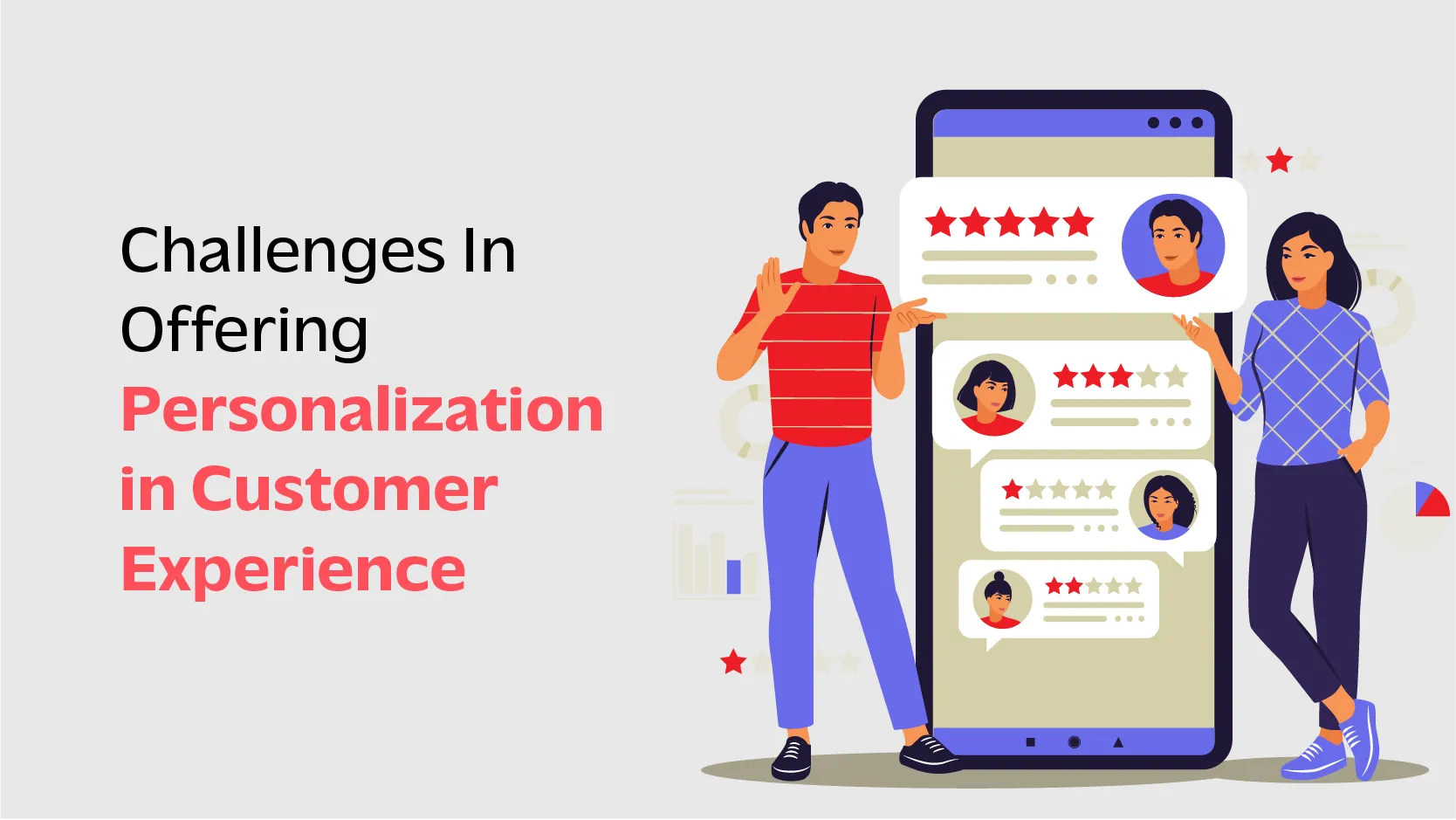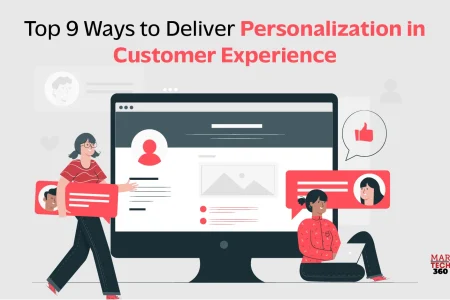Customers’ expectations have changed dramatically. Clients today expect brands to offer personalization in customer experiences to feel valued for the business they offer to the brand.
According to a report by Gartner titled “2022 Gartner Customer Service and Support Survey,” approximately 86% of B2B and 71% of B2C clients expect businesses to be well-informed about their personal information during an interaction.
In this blog, let us have a look at the definition of personalization in customer experience, what are the common challenges in delivering a tailor-made experience, and the best practices for developing a personalization strategy.
What is Personalization in Customer Engagement?

The practice of delivering tailor-made customer experiences (CX) through content, products, or services to suffice the customer preferences and demands of each customer is referred to as personalization in customer engagement. This approach requires using data and technology to offer personalized and relevant experiences to make the client feel valued.
It can come into reality in multiple ways like customized product suggestions on e-commerce websites, content on social media platforms, personalized offers, bespoke email marketing campaigns, or tailored user interfaces in mobile applications. In this blog let us have a look at common bottlenecks that customer-facing teams face while offering a personalized experience and what are the best strategies to develop a personalization strategy:
Challenges In Offering Personalization in Customer Experience

A few enterprises are in their nascent stages of offering their clients personalized customer journeys and are facing common pitfalls in delivering a curated experience to their clients. Here are a few challenges that business decision-makers need to be aware of:
1. Collection and Evaluation of Data
One of the most significant challenges in offering hyper-personalized customer journeys is gathering, storing, and processing the right data. Following are a few challenges that you might encounter while data collection:
- Technological restrictions can be a difficult challenge to tackle
- Clients might have concerns about sharing their personal data
- The teams might not have the skills or resources to get valuable insights
- Even if you gather data, evaluating the data without the right analytical tools can be a tricky task.
2. Obsolete MarTech Stack
Many marketing teams still rely on legacy applications on their martech stack to execute their operations. If the tools and applications on the MarTech stack have become outdated, the teams will have a difficult time having a holistic view of the entire customer data. It is crucial to have advanced customer relationship management tools integrated with artificial intelligence tools to meet customer expectations.
3. Silos in the Work Processes
Silos in the work operations while managing, storing, and processing customer data will hamper personalized customer journeys. If different teams have access to different sets of data, offering a consistent personalized experience at different touch points will be difficult.
Also Read: Customer Experience Metrics: What You Should Measure and When
9 Best Practices to Develop a Personalization in Customer Experience Strategies
Given below are a few steps that business decision-makers can consider to develop and deploy a customized CX to its clients to improve customer loyalty:
1. Define An Ideal Buyer’s Persona and Their Needs
Before you embark on a journey to deliver bespoke experiences to your customers, it is important to understand who they are and what their expectations are. Defining an ideal client’s persona such as their preferences, purchasing habits, and demographics is a good starting point. Develop multiple personas that encompass various buyer personas that are your potential customers. Other than understanding the product preferences of the customer, it is also important to determine how they would like to engage or interact with the business.
2. Design a RoadMap of the Entire Customer Journey
Drafting a roadmap of the client journey right from customer acquisition to retention will assist in determining the touchpoints the client will interact with during their lifecycle. This approach will assist in identifying the touch points where the customer-facing teams can offer personalization in CX.
3. Establish Critical Customization Aspects
Offering bespoke experiences to the clients is not possible without the right data. Decision makers need to understand which type of data will be the most effective while developing a customer journey personalization strategy. Once businesses set criteria for what type of data needs to be gathered, stored, and processed. It is critical to set transparent ways to gather data.
4. Gather, Store, and Process Quality Data
The success of the personalization strategy directly depends on the quality of customer data. Enterprises need to have regular audits to evaluate the type and quality of data that is being collected. The right customer data analytical tool will assist businesses in getting more actionable insights from customer relationship management databases.
5. Customer Segmentation
Based on the gathered data, it is crucial to segment the customers according to their demographics, preferences, and buying habits. Marketing teams can even classify the clients based on familiarity with the brand, stage of the customer journey, and other factors related to the business. Customer segmentation helps with understanding what type of content or communication will be appropriate for every customer segment.
6. Execute the Personalization Strategy
Once you have a roadmap to personalized customer journey roadmaps, it is time to put the plan into action.
7. Deliver Relevant Content
Today’s customers expect that brands should only deliver content that is relevant to them. The customer’s expectations are constantly changing, they feel like they should get a unique experience. It does not mean that brands should offer tailored experiences in every stage of the customer journey. Businesses should focus on offering personalization in customer experiences at the right touchpoints.
8. Embrace an Omnichannel Approach
In order to offer a consistent tailor-made CX, it is crucial to integrate all the most common channels that the customer prefers to spend their time. Encompassing all the channels will assist in offering personalization in CX through the website, social media, email, or other preferred modes of communication.
9. Evolve on The Way
There are no set metrics to evaluate the success of the personalization in customer experience. It should be a continuous effort to improve the bespoke customer experiences. Customer feedback plays an important role in revamping the customization efforts. Businesses can ask for customer surveys after a customer service interaction to understand customer expectations.
Wrapping up Personalization in Customer Experience
Engaging and interacting with each client can be a tedious task. Customer-facing teams can find it difficult to deliver a customized experience to each client. Business decision-makers need to embrace a personalization in customer experience approach and make strategic changes based on customer demands. Offering a personalized experience is an effective way to create a loyal customer base.

